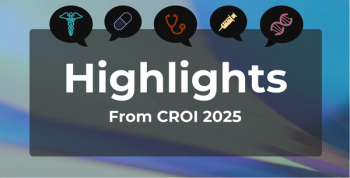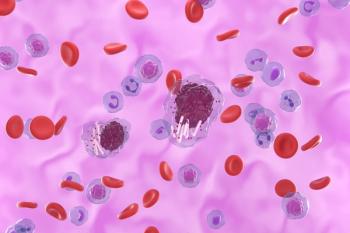Expanding Hope for Pediatric Myasthenia Gravis: Jonathan Strober, MD
In this final part of a recent interview with Jonathan Strober, MD, UCSF Benioff Children's Hospital and phase 2/3 Vibrance-MG study investigator, he explains the difficulty of evaluating investigative treatments for pediatric patients who have myasthenia gravis.
Concluding a recent interview with Jonathan Strober, MD, an investigator on the phase 2/3 Vibrance-MG study (NCT05265273) exploring pediatric use of nipocalimab for generalized
As Strober explains, enrollment is particularly difficult due to the rarity of pediatric myasthenia gravis and lower rates of antibody positivity in younger patients. Here he also speaks to the importance of early intervention and equitable access to targeted therapies. By intervening earlier, he notes, clinicians may be able to prevent irreversible harm and potentially achieve higher rates of remission. This underscores the value of expanding pediatric access to precision therapies and continuing to refine diagnostic approaches to better identify eligible patients at a younger age.
Strober is also a pediatric neurologist and director of clinical services for child neurology and of the Muscular Dystrophy Clinic at UCSF Benioff Children's Hospital.
This transcript has been edited for clarity; captions were auto-generated.
Transcript
Where does enrollment stand for the phase 2/3 Vibrance-MG study, and what are your main goals?
The trial's main goals are to make sure that the medication is safe in this younger patient population, to look at dosing compared to the older kids and adults—to make sure we have the right dosing—and to look at benefit to make sure it's working for the pediatric age group as it is working for the adolescents and the adults as well. Those are kind of the main reasons.
It's really hard to approve patients for these studies, because it's really rare to have myasthenia in the pediatric age group to start with. Then on top of that, antibodies are often negative in our adolescents and younger kids, so trying to find patients who are antibody positive has been very challenging.
In adults, it's up to 80% [who] will be positive for antibodies, where in pediatrics, it's less than 50% of patients with myasthenia [who] will actually have antibody-positive [disease]. Sometimes we can repeat the testing and eventually find antibodies, or sometimes there's a new assay that is much more sensitive, so we're getting better and better. But I think that until that becomes more standard, it's just really hard to get patients enrolled—but we keep looking and keep trying, because we want to prove that it's beneficial for even our younger patients.
How might earlier access to targeted therapies improve long-term outcomes and address disparities in pediatric myasthenia gravis?
I think the big thing when treating myasthenia gravis is trying to stop the disease as quickly as possible. The antibodies that are being produced that are blocking the receptors are also causing those receptors to break down. It's kind of like when you have an infection and the antibodies come and attach to that infection—so it tells the cells what to break down—and so the longer the antibodies are out there and attaching to the receptors, the more damage the receptors have and the harder it is to come back from that and rebuild the receptors. And so getting earlier access to care to help reduce the injury that's occurring will help these patients do better in the long term.
There's also some evidence that suggests that if you can get rid of the antibodies as much as possible early on, you might be able to get somebody into remission sooner, so that it's possible that if we can treat these patients earlier rather than later, with a drug like nipocalimab, that we can have a higher success rate in spontaneous remission of these patients.
Newsletter
Stay ahead of policy, cost, and value—subscribe to AJMC for expert insights at the intersection of clinical care and health economics.










































